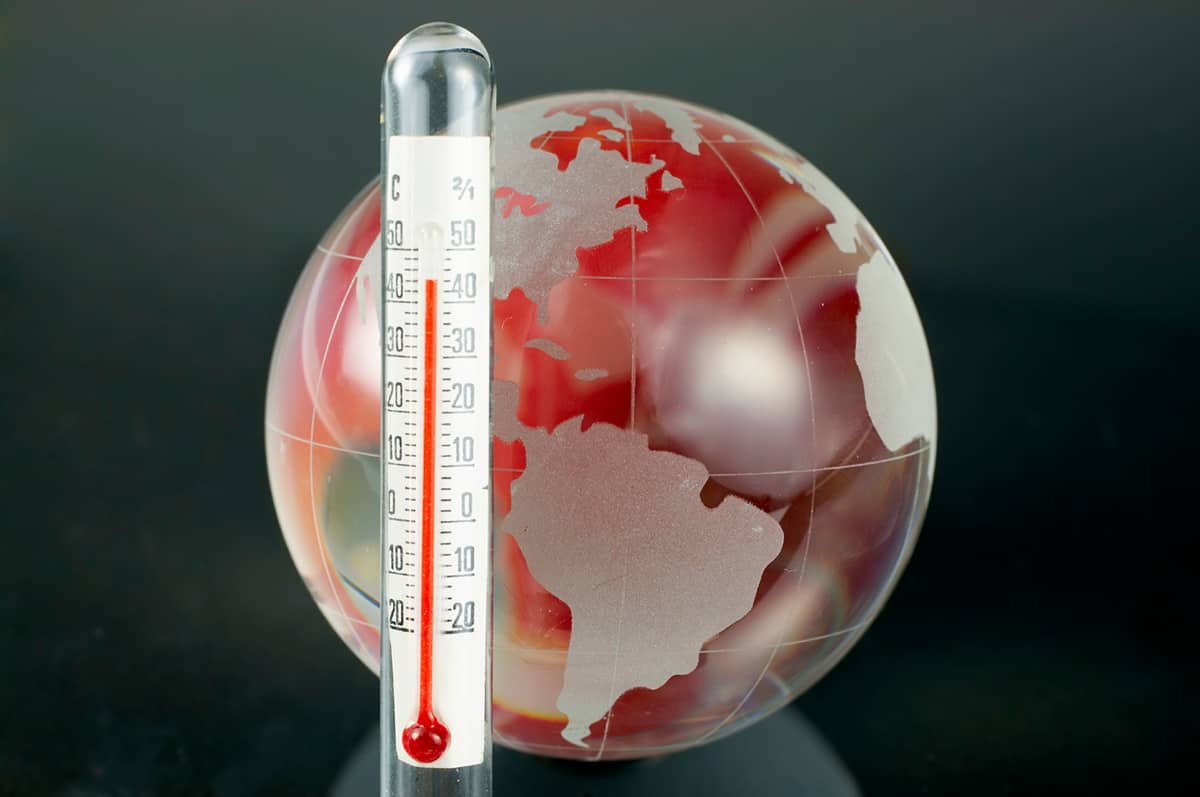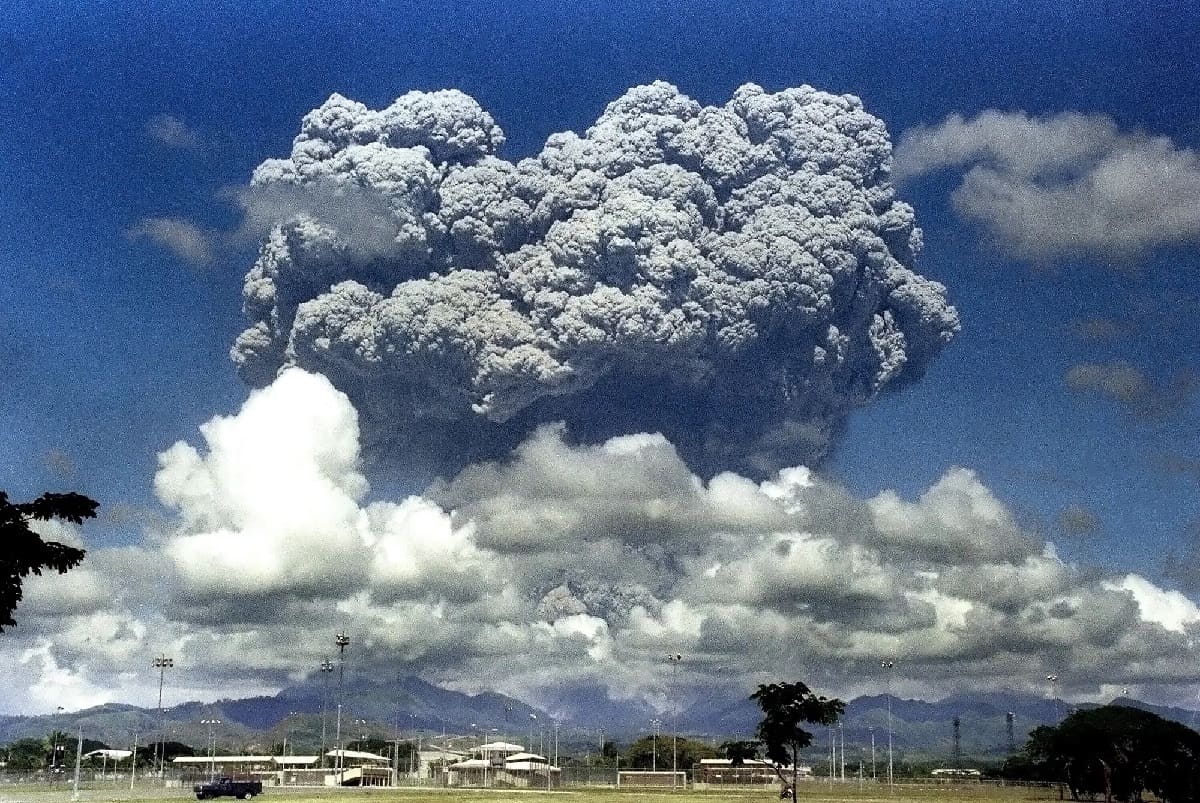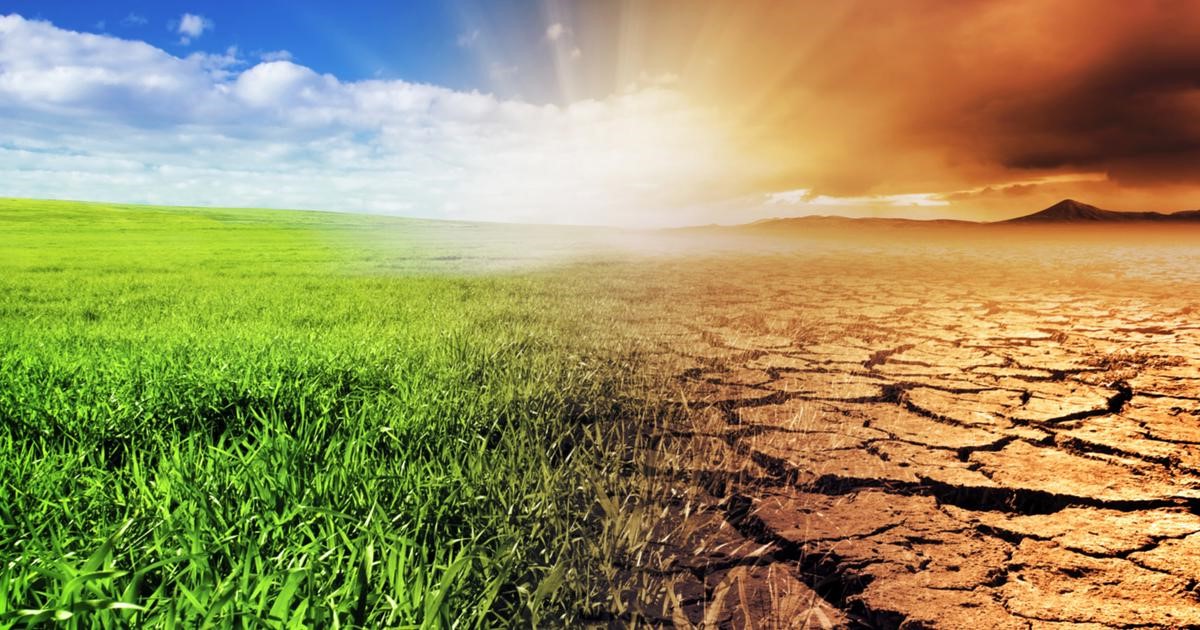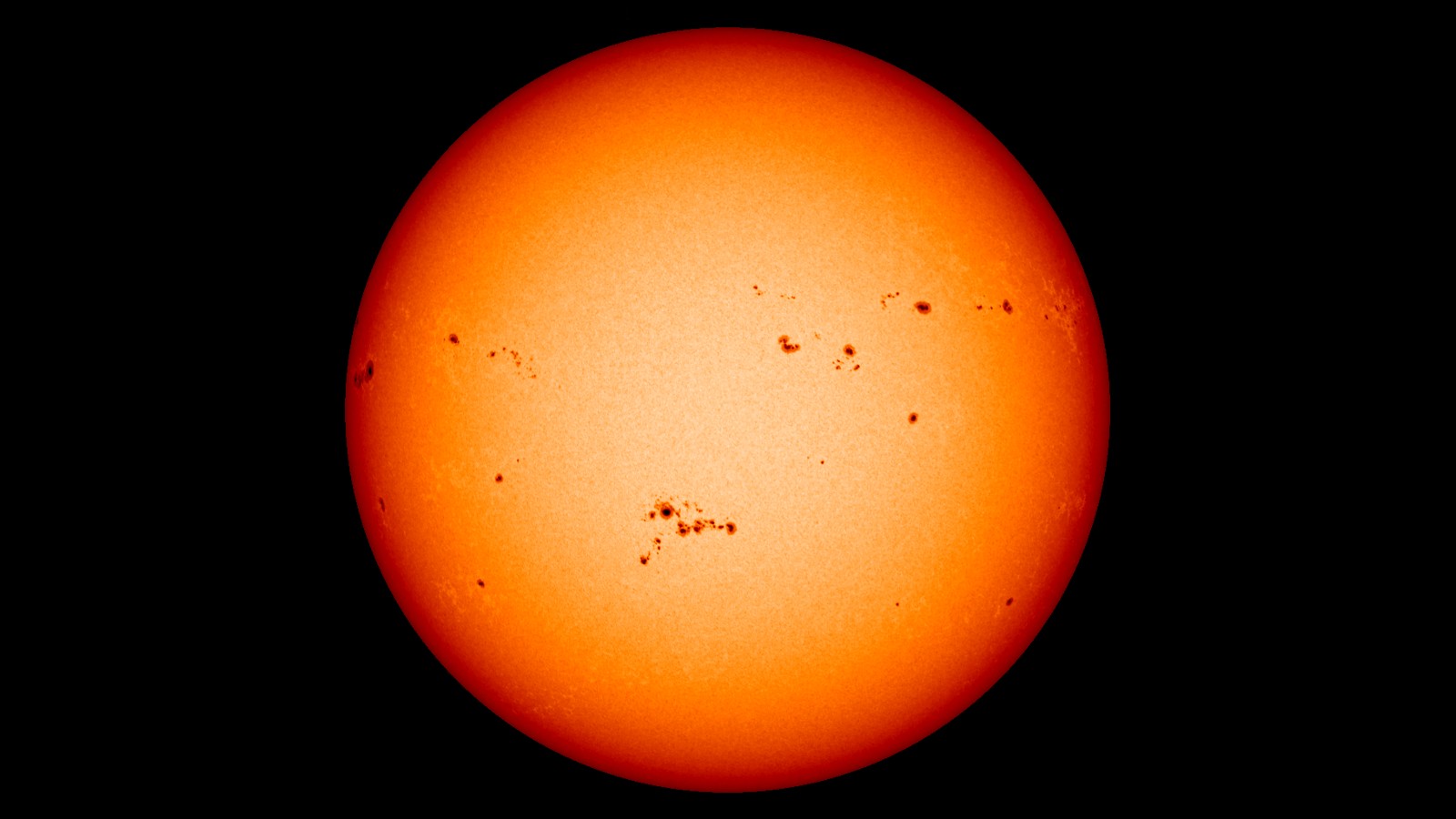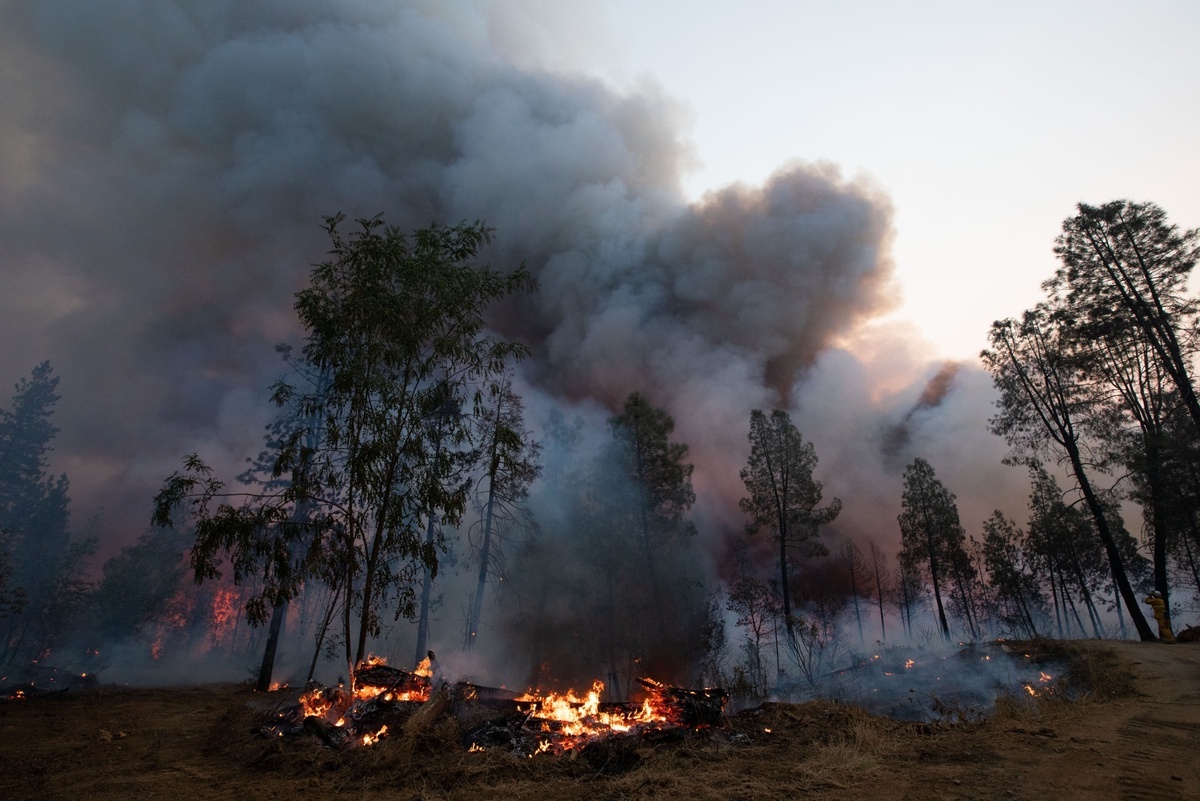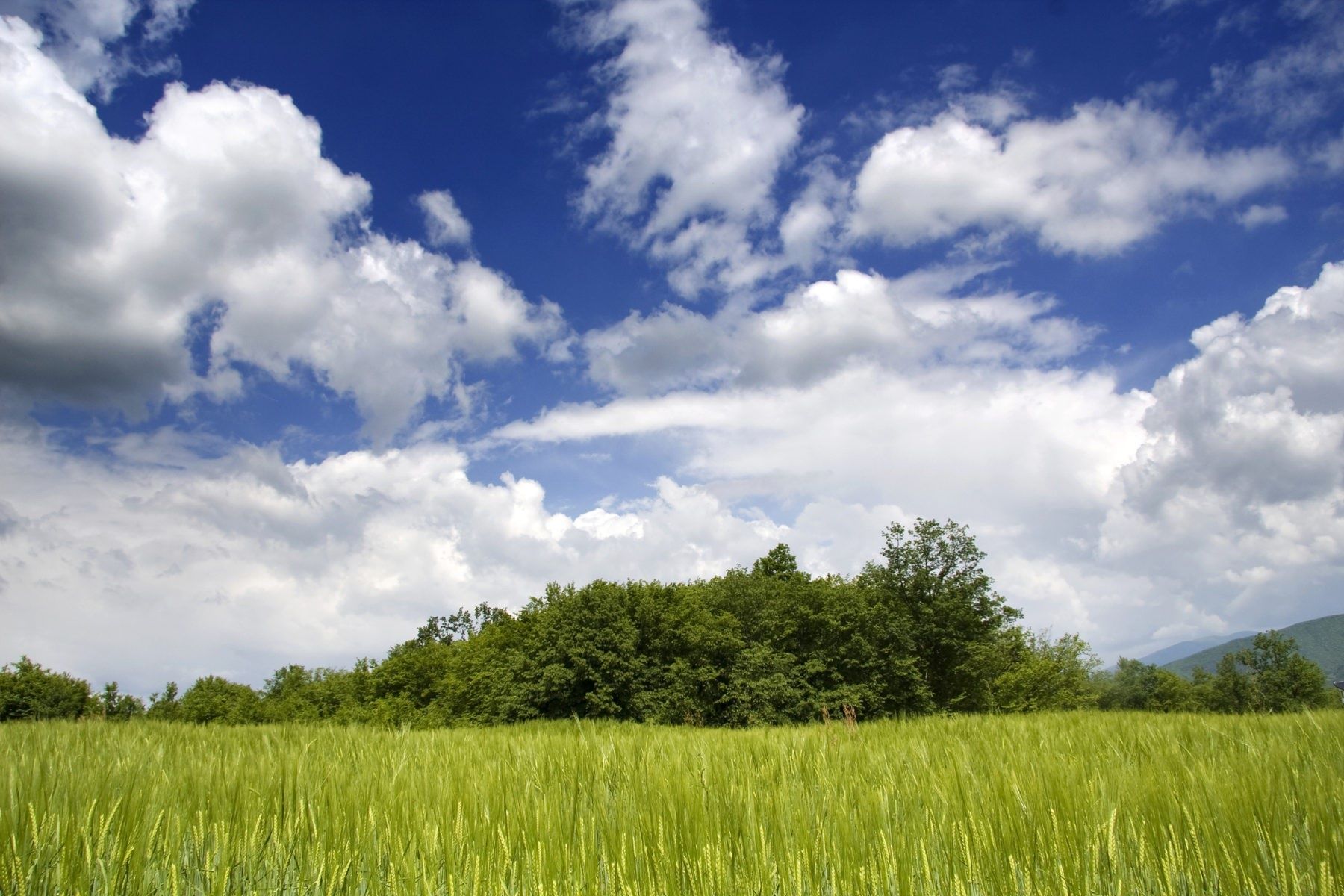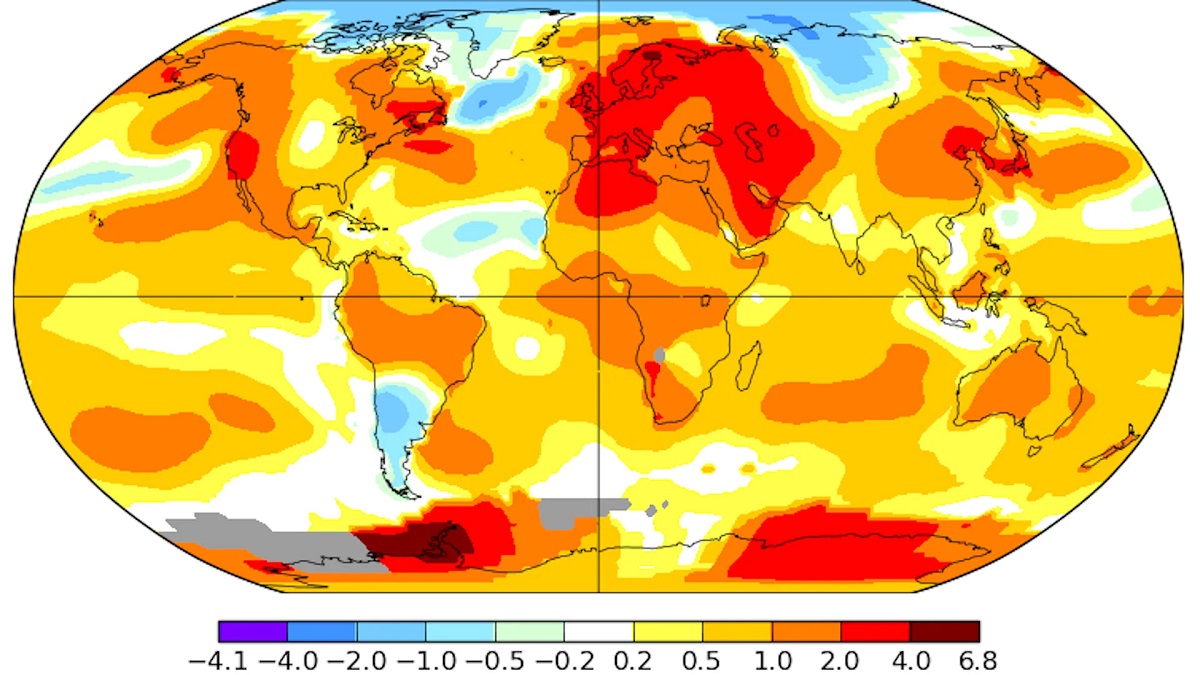Home>Weather and Climate>The Impact Of Increased Atmospheric Greenhouse Gases On Global Temperatures
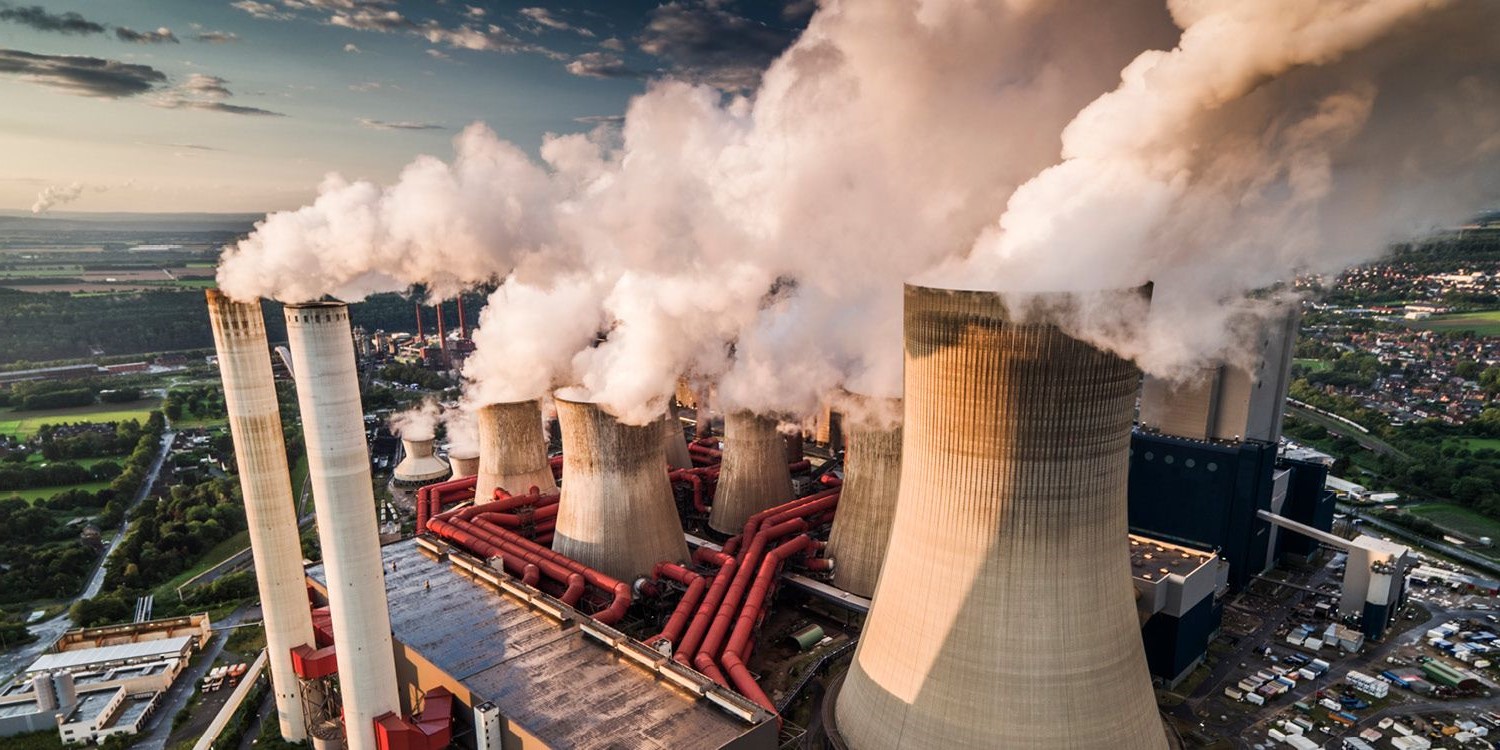

Weather and Climate
The Impact Of Increased Atmospheric Greenhouse Gases On Global Temperatures
Published: March 6, 2024
Learn about the impact of increased atmospheric greenhouse gases on global temperatures and how it affects weather and climate. Understand the connection between greenhouse gases and changing weather patterns.
(Many of the links in this article redirect to a specific reviewed product. Your purchase of these products through affiliate links helps to generate commission for Temperatures.com, at no extra cost. Learn more)
Table of Contents
- Understanding Greenhouse Gases and Their Role in Climate Change
- Historical Trends in Atmospheric Greenhouse Gas Levels
- The Link Between Increased Greenhouse Gases and Rising Global Temperatures
- Impacts of Global Temperature Rise on the Environment and Human Society
- Mitigation Strategies for Reducing Greenhouse Gas Emissions
- Adapting to the Effects of Increased Atmospheric Greenhouse Gases
Understanding Greenhouse Gases and Their Role in Climate Change
Greenhouse gases are essential components of the Earth's atmosphere, playing a crucial role in regulating the planet's temperature. These gases, including carbon dioxide (CO2), methane (CH4), nitrous oxide (N2O), and water vapor, act like a blanket, trapping heat from the sun and preventing it from escaping back into space. This natural process, known as the greenhouse effect, maintains Earth's average temperature at a habitable level, allowing life to thrive.
The greenhouse effect begins with the sun emitting energy in the form of sunlight. When this energy reaches the Earth's surface, it is absorbed and re-radiated as heat. Greenhouse gases in the atmosphere then trap a portion of this heat, preventing it from dissipating into space. As a result, the planet's surface and lower atmosphere experience increased warmth, creating a stable and hospitable climate for living organisms.
However, human activities, such as burning fossil fuels, deforestation, and industrial processes, have significantly increased the concentration of greenhouse gases in the atmosphere. This heightened accumulation amplifies the greenhouse effect, leading to a rise in global temperatures—a phenomenon commonly referred to as global warming.
The increased levels of greenhouse gases, particularly carbon dioxide, are primarily attributed to the burning of fossil fuels for energy production and transportation. Additionally, deforestation and land-use changes contribute to rising atmospheric CO2 levels by reducing the planet's capacity to absorb and store carbon.
Understanding the role of greenhouse gases in climate change is crucial for comprehending the far-reaching impacts of human activities on the environment. As the concentration of these gases continues to rise, the Earth's climate is being altered at an unprecedented rate, resulting in a myriad of environmental and societal consequences.
In the subsequent sections, we will delve into the historical trends in atmospheric greenhouse gas levels, the link between increased greenhouse gases and rising global temperatures, the impacts of global temperature rise on the environment and human society, mitigation strategies for reducing greenhouse gas emissions, and adapting to the effects of increased atmospheric greenhouse gases. Through a comprehensive exploration of these topics, we can gain a deeper understanding of the complexities surrounding climate change and the urgent need for sustainable solutions.
Read more: The Role And Impact Of Greenhouse Gases
Historical Trends in Atmospheric Greenhouse Gas Levels
The historical trends in atmospheric greenhouse gas levels provide valuable insights into the evolving composition of the Earth's atmosphere and the significant impact of human activities on these crucial components. Over the past few centuries, extensive scientific research and meticulous analysis of ice cores, tree rings, and other natural archives have enabled scientists to reconstruct historical greenhouse gas levels with remarkable precision.
One of the most notable findings is the substantial increase in atmospheric carbon dioxide (CO2) concentrations since the onset of the Industrial Revolution. Prior to this pivotal period, CO2 levels remained relatively stable for thousands of years. However, with the widespread adoption of fossil fuel combustion and industrial processes, the atmospheric CO2 concentration has surged to unprecedented levels. This surge is evident in ice core records, which reveal a stark contrast between pre-industrial and contemporary CO2 levels.
Similarly, the historical trends in methane (CH4) and nitrous oxide (N2O) concentrations exhibit notable deviations in recent centuries. While natural sources, such as wetlands and termites, have historically contributed to methane emissions, human activities, including livestock farming, rice cultivation, and fossil fuel extraction, have significantly augmented atmospheric methane levels. Likewise, the intensification of agricultural practices and industrial activities has led to a marked increase in nitrous oxide concentrations, further accentuating the anthropogenic influence on greenhouse gas dynamics.
Moreover, the meticulous examination of historical trends in atmospheric greenhouse gas levels has revealed a direct correlation between these escalating concentrations and the unprecedented changes in global climate patterns. The intricate interplay between rising greenhouse gas levels and the observed shifts in temperature, precipitation, and sea level has underscored the urgency of addressing the root causes of these perturbations.
As we continue to unravel the historical trends in atmospheric greenhouse gas levels, it becomes increasingly evident that human activities have triggered a profound and enduring impact on the Earth's climate system. The comprehensive understanding of these historical trends serves as a critical foundation for formulating effective strategies to mitigate greenhouse gas emissions and mitigate the far-reaching consequences of climate change.
Through ongoing research and interdisciplinary collaboration, scientists and policymakers are striving to leverage historical data to inform evidence-based decisions and propel the transition towards a sustainable and resilient future. By acknowledging the historical trends in atmospheric greenhouse gas levels, we can cultivate a deeper appreciation for the intricate dynamics of our planet's climate and embrace proactive measures to safeguard the well-being of current and future generations.
The Link Between Increased Greenhouse Gases and Rising Global Temperatures
The link between increased greenhouse gases and rising global temperatures is a fundamental aspect of climate science, underpinning the intricate dynamics of Earth's climate system. As the concentration of greenhouse gases, particularly carbon dioxide (CO2), methane (CH4), and nitrous oxide (N2O), continues to escalate due to human activities, the planet's temperature undergoes a discernible and consequential ascent.
At its core, this linkage is rooted in the fundamental principles of radiative forcing and the greenhouse effect. When greenhouse gases accumulate in the atmosphere, they effectively enhance the planet's capacity to trap heat, leading to an intensification of the greenhouse effect. This heightened thermal retention results in an overall increase in the Earth's surface temperature, a phenomenon commonly referred to as global warming.
The scientific consensus regarding the link between increased greenhouse gases and rising global temperatures is unequivocal, supported by a wealth of empirical evidence and comprehensive climate models. These models, incorporating intricate atmospheric and oceanic processes, consistently demonstrate a strong correlation between escalating greenhouse gas concentrations and the observed trends in global temperature rise.
Moreover, the attribution of global temperature increases to human-induced greenhouse gas emissions has been substantiated through rigorous scientific assessments, including the Intergovernmental Panel on Climate Change (IPCC) reports. These assessments meticulously evaluate the contributions of natural and anthropogenic factors to climate change, unequivocally affirming the predominant role of human activities in driving the unprecedented warming of the planet.
The ramifications of this link extend far beyond mere temperature increases, permeating diverse facets of the Earth's climate system. From the exacerbation of extreme weather events to the destabilization of polar ice caps and the acidification of oceans, the repercussions of heightened greenhouse gas concentrations reverberate across the globe, exerting profound impacts on ecosystems, biodiversity, and human societies.
As we navigate the intricate web of interactions between increased greenhouse gases and rising global temperatures, it becomes increasingly apparent that concerted efforts to mitigate emissions and foster sustainable practices are imperative. By acknowledging and comprehending this pivotal linkage, we can galvanize collective action to address the root causes of climate change and forge a path towards a resilient and harmonious coexistence with our planet.
The link between increased greenhouse gases and rising global temperatures serves as a clarion call for proactive measures, underscoring the urgency of embracing sustainable solutions and fostering a harmonious equilibrium between human activities and the Earth's delicate climate system.
Impacts of Global Temperature Rise on the Environment and Human Society
The escalating global temperatures, stemming from the intensifying greenhouse effect driven by human-induced emissions, have precipitated a cascade of profound impacts on both the environment and human society. These far-reaching consequences permeate diverse facets of the Earth's ecosystems and societal dynamics, underscoring the urgency of addressing the multifaceted challenges posed by climate change.
Environmental Impacts
1. Ecological Disruption
The rising temperatures have triggered widespread ecological disruption, leading to shifts in species' distribution patterns, altered phenology, and heightened susceptibility to habitat loss. Ecosystems are grappling with the destabilizing effects of temperature extremes, impacting the intricate web of interactions between flora and fauna.
2. Biodiversity Loss
The accelerating pace of global warming has exacerbated the vulnerability of numerous species, driving biodiversity loss at an alarming rate. From coral bleaching in marine environments to the dwindling habitats of polar bears in the Arctic, the ecological repercussions of temperature rise reverberate across diverse ecosystems, imperiling the rich tapestry of life on Earth.
3. Extreme Weather Events
The amplification of global temperatures has catalyzed the intensification and frequency of extreme weather events, including heatwaves, hurricanes, and droughts. These events inflict devastating consequences on natural landscapes, exacerbating soil erosion, water scarcity, and the incidence of wildfires, thereby disrupting the delicate balance of ecosystems.
Societal Impacts
1. Public Health Challenges
The surge in global temperatures poses significant public health challenges, manifesting in heat-related illnesses, exacerbated air pollution, and the proliferation of vector-borne diseases. Vulnerable populations, including the elderly and marginalized communities, confront heightened health risks, necessitating robust adaptation strategies and healthcare interventions.
2. Food Security Concerns
The ramifications of global temperature rise reverberate through agricultural systems, engendering food security concerns due to altered precipitation patterns, reduced crop yields, and the proliferation of pests and diseases. These challenges imperil global food supplies, underscoring the imperative of resilient agricultural practices and sustainable resource management.
3. Socioeconomic Disparities
The differential impacts of global temperature rise exacerbate socioeconomic disparities, disproportionately affecting marginalized communities and regions with limited adaptive capacity. From displacement due to sea-level rise to the exacerbation of resource conflicts, the societal fabric contends with the multifaceted repercussions of climate change, necessitating equitable and inclusive resilience-building initiatives.
In essence, the impacts of global temperature rise on the environment and human society underscore the imperative of concerted action to mitigate emissions, bolster resilience, and foster sustainable pathways towards a harmonious coexistence with the planet. By acknowledging and addressing these multifaceted challenges, societies can forge a resilient and equitable trajectory, safeguarding the well-being of current and future generations amidst the complexities of a changing climate.
Mitigation Strategies for Reducing Greenhouse Gas Emissions
Mitigating greenhouse gas emissions necessitates a multifaceted approach encompassing diverse sectors and stakeholders, underpinned by a resolute commitment to sustainable practices and innovative solutions. The imperative of reducing emissions is underscored by the urgency of addressing climate change and fostering a resilient, low-carbon future for the planet. Here are several pivotal mitigation strategies that can significantly contribute to curbing greenhouse gas emissions:
-
Transition to Renewable Energy: Accelerating the transition from fossil fuel-based energy sources to renewable alternatives, such as solar, wind, and hydroelectric power, is pivotal in mitigating greenhouse gas emissions. Embracing clean energy technologies not only reduces reliance on carbon-intensive fuels but also fosters energy independence and resilience.
-
Energy Efficiency Measures: Implementing robust energy efficiency measures across industrial, commercial, and residential sectors can yield substantial reductions in greenhouse gas emissions. From enhancing building insulation to deploying energy-efficient appliances and machinery, optimizing energy usage is instrumental in curbing carbon footprints.
-
Sustainable Transportation: Promoting sustainable transportation solutions, including electrification of vehicles, expansion of public transit systems, and incentivizing active mobility options such as cycling and walking, can significantly mitigate emissions from the transportation sector, a major contributor to greenhouse gas emissions.
-
Reforestation and Afforestation: Investing in reforestation initiatives and afforestation programs can sequester carbon dioxide from the atmosphere, mitigating emissions and enhancing carbon sinks. Restoring degraded ecosystems and preserving forests are pivotal in mitigating the impacts of deforestation and land-use changes.
-
Circular Economy Practices: Embracing circular economy principles, including recycling, reusing, and reducing waste generation, can mitigate emissions across diverse industries. By minimizing resource extraction and promoting sustainable consumption patterns, circular economy practices contribute to emission reductions.
-
Carbon Capture and Storage (CCS): Deploying carbon capture and storage technologies in industrial processes and power generation facilities can effectively mitigate emissions by capturing carbon dioxide before it is released into the atmosphere and storing it underground, preventing its contribution to the greenhouse effect.
-
Policy and Regulatory Measures: Enacting robust policies and regulations aimed at incentivizing emission reductions, fostering clean technology innovation, and imposing carbon pricing mechanisms can galvanize transformative changes across industries and drive the transition towards a low-carbon economy.
By integrating these mitigation strategies into comprehensive climate action plans and fostering international collaboration, societies can collectively mitigate greenhouse gas emissions and chart a sustainable trajectory towards a resilient and harmonious coexistence with the planet. Embracing these strategies with unwavering determination and innovation is pivotal in addressing the challenges posed by climate change and safeguarding the well-being of current and future generations.
Adapting to the Effects of Increased Atmospheric Greenhouse Gases
Adapting to the effects of increased atmospheric greenhouse gases necessitates a proactive and multifaceted approach to mitigate the far-reaching impacts of climate change and foster resilience across diverse sectors. As the planet grapples with the escalating challenges posed by global warming and its associated repercussions, embracing adaptation strategies is pivotal in safeguarding ecosystems, enhancing societal resilience, and mitigating vulnerabilities.
Enhancing Climate Resilience
Enhancing climate resilience entails fortifying infrastructure, ecosystems, and communities to withstand the impacts of climate change. This encompasses bolstering coastal defenses to mitigate the risks of sea-level rise, implementing nature-based solutions such as wetland restoration and mangrove conservation to buffer against extreme weather events, and integrating climate-resilient design principles into urban planning and infrastructure development.
Read more: The Impact Of Global Warming Since 1998
Sustainable Agriculture and Food Security
In the face of shifting precipitation patterns and heightened frequency of extreme weather events, adapting agricultural practices to enhance resilience is imperative. Embracing drought-resistant crop varieties, implementing water-efficient irrigation techniques, and promoting agroforestry initiatives can bolster food security and mitigate the vulnerabilities of agricultural systems to climate variability.
Adaptive Water Resource Management
Adaptive water resource management is pivotal in addressing the challenges posed by altered hydrological cycles and increasing water scarcity. This encompasses implementing water conservation measures, enhancing water storage and distribution infrastructure, and fostering integrated water resource management approaches to sustainably meet the burgeoning demands for water in a changing climate.
Climate-Responsive Health Interventions
Adapting to the health impacts of increased atmospheric greenhouse gases necessitates the implementation of climate-responsive health interventions. This includes strengthening healthcare systems to address heat-related illnesses, vector-borne diseases, and air pollution-related health risks, while fostering community-based resilience initiatives to safeguard public health in the face of climate-induced challenges.
Resilient Urban and Rural Communities
Building resilient urban and rural communities entails fostering inclusive and participatory adaptation strategies that prioritize the needs of vulnerable populations. This encompasses enhancing early warning systems for extreme weather events, promoting sustainable land-use planning, and bolstering community-based adaptation initiatives to mitigate the disparities in adaptive capacity across diverse societal segments.
Ecosystem-Based Adaptation
Ecosystem-based adaptation strategies, including the preservation and restoration of natural habitats, are instrumental in mitigating the impacts of climate change on biodiversity and ecological resilience. Protecting critical ecosystems, such as coral reefs, mangroves, and forests, fosters climate resilience, enhances carbon sequestration, and safeguards the invaluable services provided by diverse ecosystems.
By embracing these adaptation strategies with unwavering determination and innovation, societies can collectively navigate the complexities of climate change, mitigate vulnerabilities, and foster a harmonious coexistence with the planet. The imperative of adapting to the effects of increased atmospheric greenhouse gases underscores the urgency of proactive measures to enhance resilience and safeguard the well-being of current and future generations amidst the multifaceted challenges posed by a changing climate.
